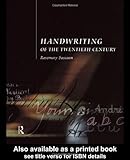Modern systems aim for legibility, at speed.
Anyone wanting to see different systems used during 20th century might be interested in this book: http://www.amazon.co.uk/Handwriting-Twentieth-Century-Rosema...
People interested in how penmanship has changed over the 20th century might be interested in this (weirdly expensive book)
http://www.amazon.co.uk/Handwriting-Twentieth-Century-Rosema...
Different systems prioritise different things. Briem looks nice until you see how it looks if you're writing really fast - all those zigs and zags blend in.
I'm not sure optimizing for attractive hand-writing is a good idea.
If you're interested in this kind of thing you might like this ridiculously over-priced book: http://www.amazon.co.uk/Handwriting-Twentieth-Century-Rosema...


People teaching hand-writing today concentrate on speed and readability rather than beautiful writing. Some cursive forms are good for speed and readability. Taking notes is still an important skill for students, and computer note taking systems aren't always good enough.
There's not much research, but the little bits that exist suggest that taking notes helps people learn.
Some systems, like Briem, are fast and look neat enough but can end up as hard to read zig-zags. http://briem.net/
This (weirdly expensive book) has details of how writing systems have changed over the years. http://www.amazon.co.uk/Handwriting-Twentieth-Century-Rosema...